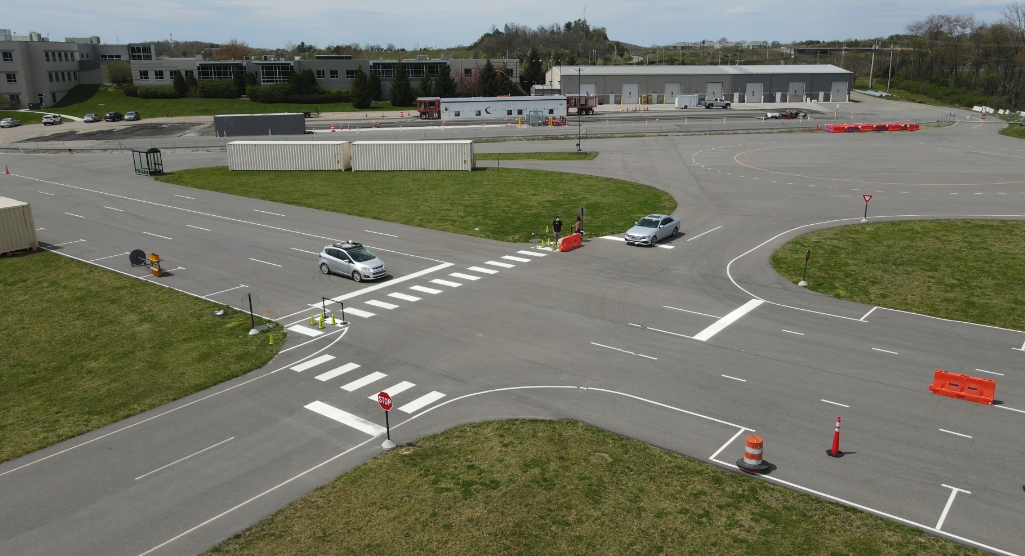
Abstract
Road users communicate with one another in various ways (e.g. hand gestures, eye contact). There is growing concern in the industry about whether highly automated vehicles (HAVs) will be able to communicate intent to other road users in the same ways, and to the same benefits, that a human can. The investigation of potential HAV external communication systems is underway by numerous stakeholders in many countries. There is a desire by many automotive original equipment manufacturers (OEMs) to adopt a common implementation across the automotive industry to prevent road user confusion of signal meaning and maintaining safety on the roadways. While some systems show promise, there remain design parameters that stakeholders cannot agree on and their implications are misunderstood (e.g. location on vehicle, color). This proposed research study will evaluate these HAV external communication design parameters in both static and dynamic settings and from a driver or pedestrian road user perspectives.
Project Highlights
- These results have implications for future design of external communication displays on L4+ AVs. Training may be necessary for road users, given the relatively low percentage of participants who understood the meaning of these displays after multiple exposures and participants’ confusion in where to look and how to interpret the intention of the display when multiple vehicles were present.
- The project was presented at the ISO TR 23735 meeting in April 2022. From this meeting, funding was procured to run a secondary study to implement learnings and findings derived from Allusion 1 immediately.
Final Report
EWD & T2 Products
Both undergraduate and graduate students were heavily involved in the performing the literature review, developing the research plan, conducting research, analyzing the data, and final report delivery.
Student Impact Statement – Alexandria Rossi-Alvarez (pdf): The student(s) working on this project provided an impact statement describing what the project allowed them to learn/do/practice and how it benefited their education.
A class presentation has been given to a special topics class, Human Factors and Transportation. The presentation can be found here.
This project will be a part of Alexandria Rossi-Alvarez’s Dissertation.
This project has led to a TRB poster which can be found here.
Presentations/Publications
Rossi-Alvarez, A. I., Klauer, S., Miles, M., & Doerzaph, Z. (In Review). Understanding Vulnerable Road User Preference and Interpretation of External Communication with Multiple Highly Automated Vehicles. Paper submitted to TRR.
Blanco, M., Rossi-Alvarez, A. I., Klauer, S., Miles, M., Grove, K., Schaudt, A., & Doerzaph, Z. (2022). Understanding Vulnerable Road User Preference and Interpretation of External Communication with Multiple Highly Automated Vehicles. Presentation at the 2022 SAE Conference,
Rossi-Alvarez, A. I., Klauer, S., Miles, M., Grove, K., Schaudt, A., & Doerzaph, Z. (2022). Understanding Vulnerable Road User Preference and Interpretation of External Communication with Multiple Highly Automated Vehicles. Presentation at the IISE Annual Conference & Expo 2022, Seattle Washington.
Rossi-Alvarez, A. I., Klauer, S., Miles, M., & Doerzaph, Z. (2022). Impact of Highly Automated Vehicle (HAV) External Communication on Vulnerable Road User (VRU) Understanding of Vehicle Intention. Presented virtually at the 2022 WiDS conference.
Rossi-Alvarez, A. I., Klauer, S., Miles, M., & Doerzaph, Z. (2022). Impact of Highly Automated Vehicle (HAV) External Communication on Vulnerable Road User (VRU) Understanding of Vehicle Intention. Presented at the Transportation Research Board: 101st Annual Meeting, Washington DC.
Farese, T., Parks, L., & Rossi-Alvarez, A. I. (2021). Impact of Highly Automated Vehicle (HAV) External Communication on Vulnerable Road User (VRU) Understanding of Vehicle Intention. Presented Virginia Tech Industrial and System Engineering department’s annual research symposium.
Rossi-Alvarez, A. I., Klauer, S., Miles, M., Grove, K., Schaudt, A., & Doerzaph, Z. (2021). Understanding Vulnerable Road User Preference and Interpretation of External Communication with Multiple Highly Automated Vehicles. Presentation ISO Standards meeting.
May 2021 – Project was briefly discussed in a video about the Smart Road:Women in Transportation Seminar Video
Final Dataset
The final datasets for this project are located in the Safe-D Collection on the VTTI Dataverse; DOI: 10.15787/VTT1/ZUJSAP.
Research Investigators (PI*)
Charlie Klauer (VT-VTTI)*
Andy Schaudt (VT-VTTI)
Alexandria I. Rossi-Alvarez (VTTI-Student)
Melissa Miles
Project Information
Start Date: 2020-03-01
End Date: 2022-08-22
Status: Completed
Grant Number: 69A3551747115
Total Funding: $351,557
Source Organization: Safe-D National UTC
Project Number: VTTI-00-027
Safe-D Theme Areas
Safe-D Application Areas
Vulnerable Users
Driver Factors and Interfaces
Vehicle Technology
More Information
Sponsor Organization
Office of the Assistant Secretary for Research and Technology
University Transportation Centers Program
Department of Transportation
Washington, DC 20590 United States
Performing Organization
Virginia Polytechnic Institute and State University
Virginia Tech Transportation Institute
3500 Transportation Research Plaza
Blacksburg, Virginia 24061
USA
